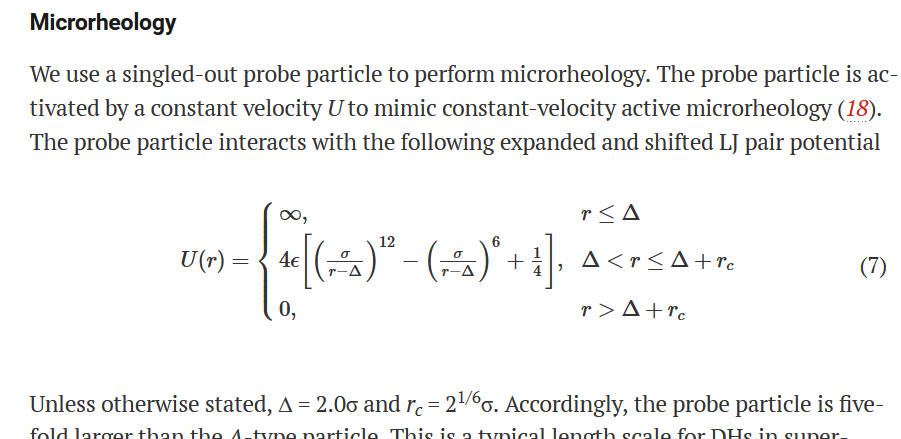Hi everyone,
I am going to simulate a glass-forming liquid using a model described in the article:
https://www.science.org/doi/full/10.1126/sciadv.aba8766
(It models a glass-forming liquid using a mixture of two types of particles (80:20) interacting with each other through a smoothed LJ potential). This model shows the transition around 0.35 temperature in the reduced units. However, my simulation finds this material in the glass phase even at 0.466 temperature!
I have been struggling with this issue for a couple of weeks! and tried to modify every parameter that I thought could play a role in this behavior. I examined other thermostats, Langevin, Berendsen, …, I also test rescale velocity method and fix nvk which were mentioned in references of the article or the related ones. All methods can keep the system at the desired temperature, however, the system still goes into the glass phase at higher temperatures than the critical temperature.
I provide a simple version of my Lammps code here. (this version applies lj/cut as pair_style potential, but my original code calls a table letting the particles interact with each other through the smoothed lj/cut. Also, I eliminated the preparation of the initial configuration section).
I would be really thankful if you could guide me with this issue.
variable rho equal 1.2
variable Natom equal 1000
variable L equal ({Natom}/{rho})^(1/3)
units lj
dimension 3
boundary p p p
atom_style atomic
region SimulationBox block 0 {L} 0 {L} 0 ${L}
create_box 2 SimulationBox
create_atoms 1 random 800 737392 NULL overlap 0.5 maxtry 10000
create_atoms 2 random 200 647483 NULL overlap 0.5 maxtry 10000
neighbor 0.3 multi
neigh_modify every 1 delay 0
mass * 1.0
velocity all create 0.466 837376 dist gaussian mom yes
thermo 5000
timestep 0.01
pair_style lj/cut 2.5
pair_coeff 1 1 1.0 1.0 2.5
pair_coeff 1 2 1.5 0.8 2.0
pair_coeff 2 2 0.5 0.88 2.2
minimize 10e-7 10e-7 100000 100000
fix fix1 all nve
run 50000
unfix fix1
fix fix1 all nvt temp 0.466 0.466 1.0
run 100000
unfix fix1
fix fix1 all nvt temp 0.466 0.466 1.0
dump dump1 all xyz 5 dump.xyz
run 100000
undump dump1
unfix fix1

